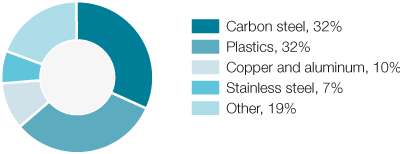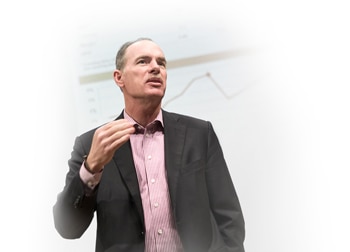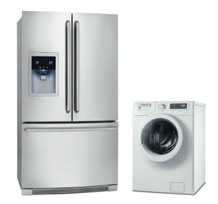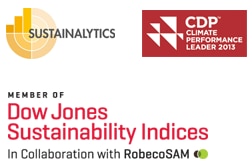Risks and uncertainty factors
Electrolux ability to increase profitability and shareholder value is based on three elements: Innovative products, strong brands and cost-efficient operations. Realizing this potential requires effective and controlled risk management.
Risks in connection with the Group’s operations can, in general, be divided into operational risks related to business operations and those related to financial operations. Operational risks are normally managed by the operative units within the Group, and financial risks by the Group’s treasury department.
Risks and uncertainty factors
Electrolux operates in competitive markets, most of which are relatively mature. Demand for appliances varies with general business conditions, and price competition is strong in a number of product categories. Electrolux ability to increase profitability and shareholder value is largely dependent on its success in developing innovative products and maintaining cost-efficient production. Major factors for maintaining and increasing competitiveness include managing fluctuations in prices for raw materials and components as well as implementing restructuring. In addition to these operative risks, the Group is exposed to risks related to financial operations, e.g., interest risks, financing risks, currency risks and credit risks. The Group’s development is strongly affected by external factors, of which the most important in terms of managing risks currently include:
Variations in demand
Demand for appliances is affected by the general business cycle. A deterioration in market conditions may lead to lower sales volumes as well as a shift of demand to low-price products, which generally have lower margins. Utilization of production capacity may also decline in the short term. In 2013, demand in North America and emerging markets showed growth, while demand for appliances in several of Electrolux core markets in Europe continued to decline. The global economic trend is an uncertainty factor in terms of the development in the future.
Price competition
Most of the markets in which Electrolux operates features strong price competition. Some of Electrolux markets experienced strong price pressure during 2013. The Group’s strategy is based on innovative products and brand-building, and is aimed, among other things, at minimizing and offsetting price competition for its products. A continued downturn in market conditions involves a risk of increasing price competition.
Changes in prices for raw materials and components
The raw materials to which the Group is mainly exposed comprise steel, plastics, copper and aluminum. Market prices were rather stable during 2013. Bilateral agreements are used to manage price risks. To some extent, raw materials are purchased at spot prices. There is considerable uncertainty regarding trends for the prices of raw materials.
Exposure to customers and suppliers
Electrolux has a comprehensive process for evaluating credits and tracking the financial situation of retailers. Management of credits as well as responsibility and authority for approving credit decisions are regulated by the Group’s credit policy. Credit insurance is used in specific cases to reduce credit risks. The weak trend in some core markets in 2013 impacted the Group’s retailers who exterienced difficult trading conditions.
Access to financing
The Group’s loan-maturity profile for 2014 and 2015 represents maturities of approximately SEK 3,067m in long-term borrowings. In addition, Electrolux has two unused committed back-up facilities. One EUR 500m multi-currency revolving credit facility, approximately SEK 4,400m, maturing in 2018 and a credit facility of SEK 3,400m, maturing in 2017.
Risks, risk management and risk exposure are described in more detail in Note 1 Accounting principles, Note 2 Financial risk management and in Note 18 Financial instruments.
Sensitivity analysis 2013
| Risk | Change | Pre-tax earnings impact, SEKm |
|---|---|---|
| Raw materials |
|
|
| Steel | 10% | 700 |
| Plastics | 10% | 600 |
| Currencies1) and interest rates |
|
|
| USD/SEK | -10% | 722 |
| EUR/SEK | -10% | 350 |
| BRL/SEK | -10% | -456 |
| AUD/SEK | -10% | -263 |
| GBP/SEK | -10% | -231 |
| Interest rate | 1 percentage point | 70 |
Raw-materials exposure 2013

CEO Statement

In 2013 we continued to deliver above our growth target and delivered 4.5% in organic sales growth.
CEO Statement

I'm convinced that raising product efficiency for the growing middle class is where long-term shareholder value creation lies.
Our products

Electrolux is the only appliance manufacturer in the industry to offer complete solutions for both consumers and professionals. The focus is on innovative and energy-efficient products in the premium segments.
Sustainability
Achieving the Group's vision of sustainability leadership is crucial to realizing the business strategy. The objective is to develop smarter, more accessible, resource-efficient solutions that meet people's needs and improve their lives. Read the comprehensive sustainability performance review.
Awards & recognition

Financial Reporting
Net sales for the Electrolux Group in 2013 amounted to SEK 109,151m, as against SEK 109,994m in the previous year. The organic sales growth was 4.5%, while currencies had an impact of -5.3%.
